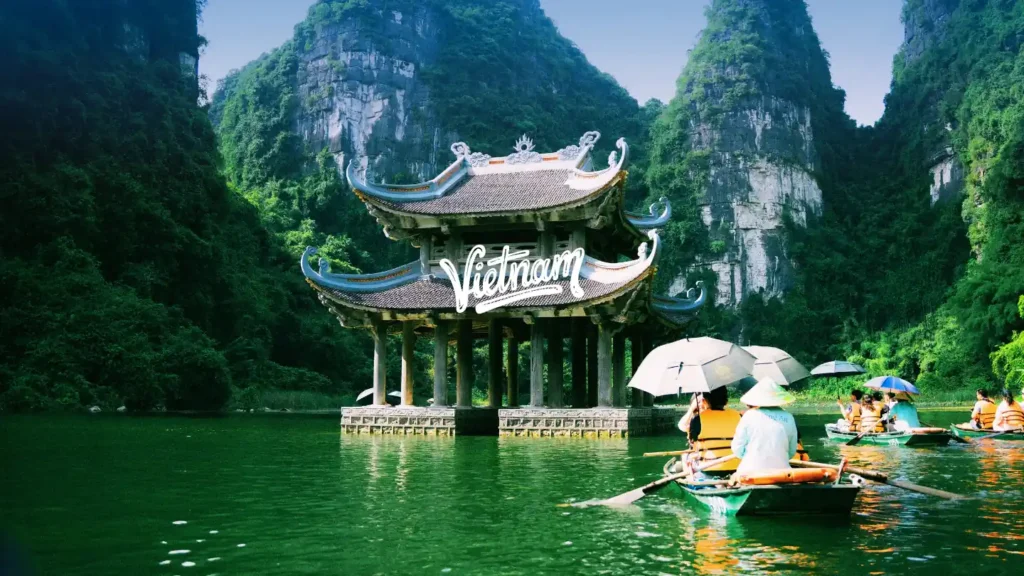Vietnam is a country of contrasts—misty mountains in the north, sun-drenched beaches in the south, ancient towns, bustling cities, quiet rivers, and jungle-covered caves. Every corner has its own story, flavor, and pace. Whether you’re here for the culture, the landscapes, or simply the food, this list covers the best places to visit in Vietnam from top to bottom.
Let’s start with a simple guide to help you plan your time.
Table of Contents
How Long Should You Spend in Vietnam?
To truly experience Vietnam—from its misty northern mountains to the sunny southern islands—plan for approximately 3 to 4 weeks. The country stretches over 1,000 miles, and each region offers something unique, so taking your time is key.
If you’re short on time, it’s better to focus on one region and truly immerse yourself in it, rather than rushing through everything.
Here’s a simple breakdown of how much time to spend in each region:
- Northern Vietnam: 7–8 days: Perfect for trekking in Sapa, cruising through Ha Long Bay, and exploring Hanoi’s old streets.
- Central Vietnam: 6–7 days: Ideal for enjoying the charm of Hoi An, the imperial history of Hue, and relaxing beaches near Da Nang.
- Southern Vietnam: 5–6 days: Great for discovering the bustle of Ho Chi Minh City, exploring the Mekong Delta, or kicking back on Phú Quốc Island.
Let’s explore the 10 best places to visit in Vietnam, organized by region, along with practical tips to help you plan your trip.
Lonely Planet Vietnam, Cambodia, Laos & Northern Thailand: Detailed Itineraries
Northern Vietnam
1. Ha Long Bay – Northern Vietnam
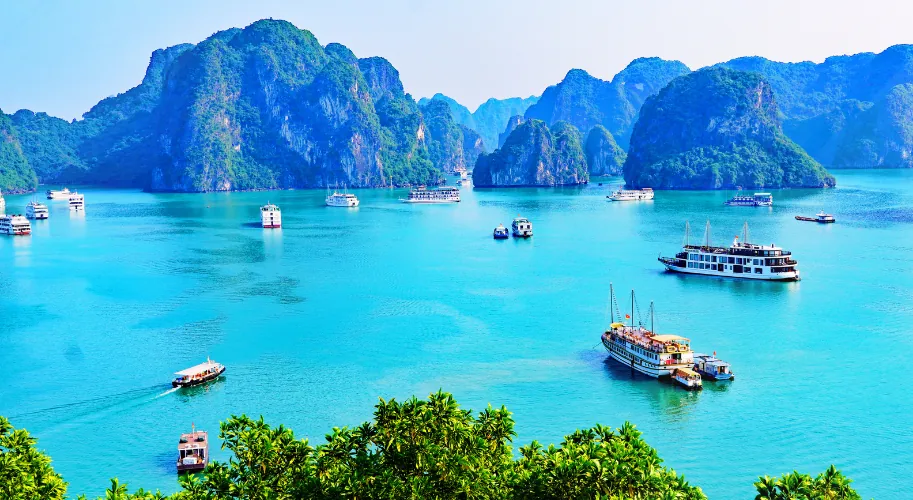
Why Visit:
A UNESCO World Heritage Site, Ha Long Bay is renowned for its thousands of limestone karsts that rise from emerald-green waters. It’s peaceful, surreal, and picture-perfect.
How to Get There:
- Take a 2.5 to 3-hour drive or shuttle from Hanoi.
- Many cruises include transport from the city.
Top Tips:
- Book a 2-day, 1-night cruise for the whole experience.
- Choose Lan Ha Bay or Bai Tu Long Bay for fewer crowds.
- Bring motion sickness medication if you’re prone to motion sickness.
2. Sapa – Northern Vietnam
Why Visit:
Nestled in the Hoàng Liên Son Mountains, Sapa offers stunning rice terraces and treks through ethnic minority villages. It’s an incredible, refreshing escape from the city.
How to Get There:
- Overnight train or limousine bus from Hanoi to Lào Cai, then 1 hour by car to Sapa.
- New expressways make buses faster than before.
Top Tips:
- Hire a local guide for multi-day treks and authentic homestays.
- Visit from September to November or March to May for the best weather.
- Dress in layers; temperatures drop at night.
3. Hanoi – Northern Vietnam
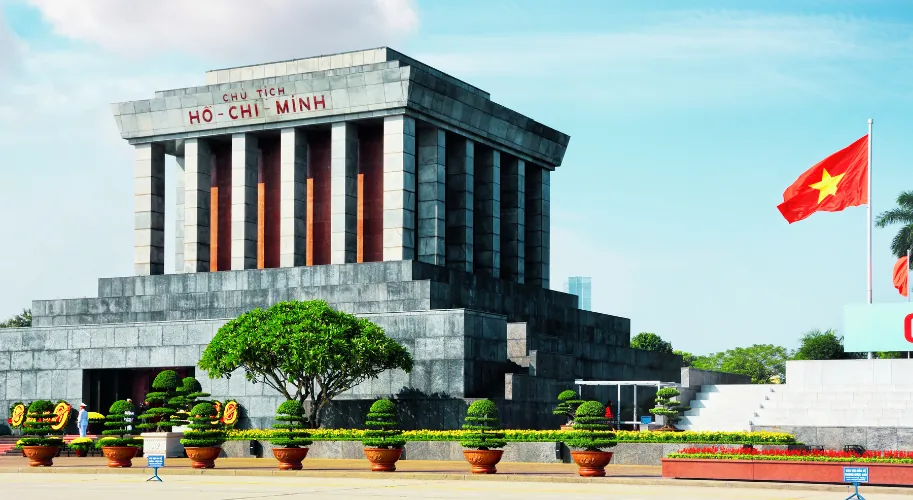
Why Visit:
The capital city mixes ancient traditions with modern chaos. Wander through the Old Quarter, sip egg coffee, and visit historical landmarks.
How to Get There:
- Fly into Noi Bai International Airport (HAN).
- Well-connected by bus, train, and domestic flights.
Top Tips:
- Explore on foot early in the morning when the streets are quieter.
- Try street food like bun cha, pho, and banh cuon.
- Visit the Ho Chi Minh Mausoleum, Temple of Literature, and Train Street.
Central Vietnam (6–7 Days)
4. Phong Nha-Ke Bang National Park – Central Vietnam
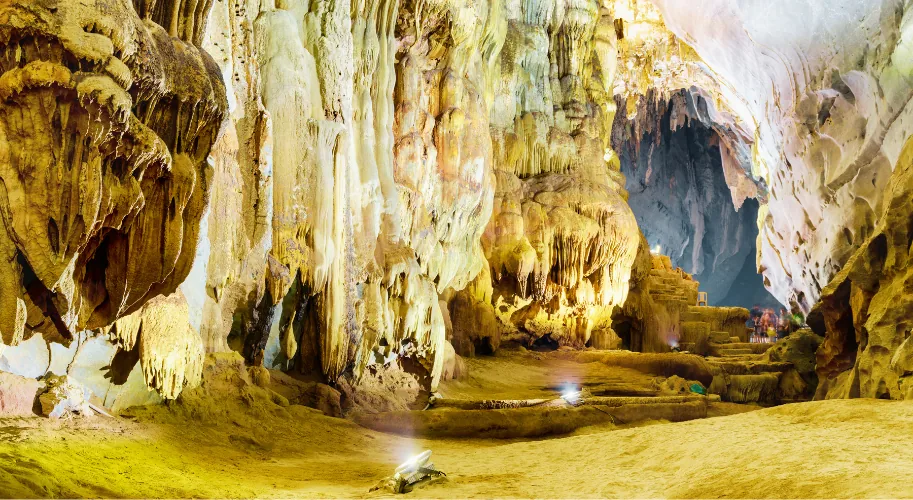
Why Visit:
Home to some of the world’s largest and most dramatic caves, including Son Doong, Phong Nha is an adventure lover’s dream.
How to Get There:
- Fly or take a train to Dong Hoi, then take a 45-minute drive to Phong Nha town.
- Buses also connect from Hue or Ninh Binh.
Top Tips:
- Book in advance if you want to do a Son Doong or Hang En expedition.
- For a shorter trip, Paradise Cave and Dark Cave are both family-friendly options.
- Rent a bike to explore local farms and riverside cafes.
5. Hue – Central Vietnam
Why Visit:
Once the imperial capital, Hue is rich in history and charm. The Perfume River runs through the city, flanked by citadels, pagodas, and royal tombs.
How to Get There:
- Fly into Phu Bai Airport, or take a train from Da Nang or Hanoi.
- It’s also a scenic 3-hour drive from Hoi An.
Top Tips:
- Visit the Imperial City (Citadel) early to beat the heat.
- Take a dragon boat ride on the Perfume River.
- Try bun bo Hue, a spicy noodle soup unique to the region.
6. Hoi An – Central Vietnam
Why Visit:
With its lantern-lit streets and preserved Old Town, Hoi An feels like stepping back in time. It’s also known for its tailor shops and riverside dining.
How to Get There:
- Fly into Da Nang International Airport, then drive 45 minutes south.
- Buses and trains connect from Hue or Nha Trang.
Top Tips:
- Visit at night when the lanterns are glowing.
- Rent a bike and head to An Bang Beach.
- Take a cooking class or get clothes custom-tailored.
7. Da Nang – Central Vietnam
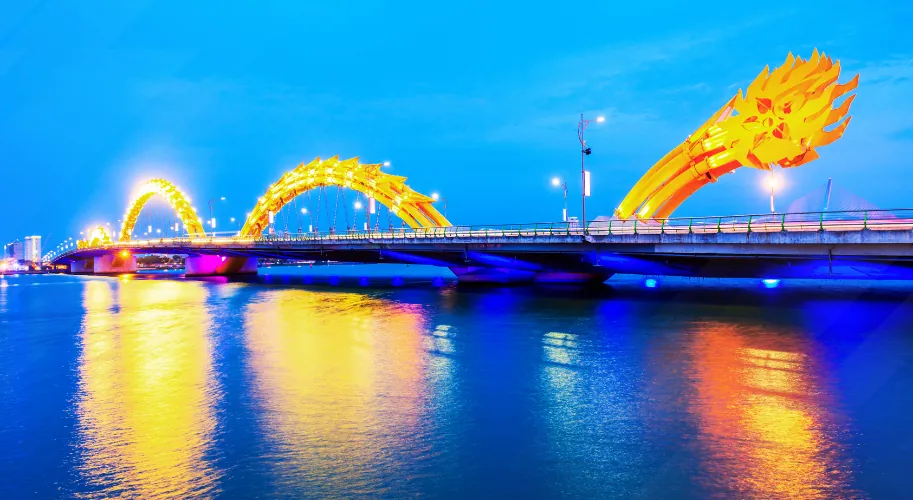
Why Visit:
Vietnam’s third-largest city is a blend of modernity and beach town vibes. It’s known for its long stretches of sand and unique attractions, such as the Golden Bridge.
How to Get There:
- Direct flights connect from major cities like Hanoi, HCMC, and Bangkok.
- Easily accessible from Hue and Hoi An.
Top Tips:
- Ride the Ba Na Hills cable car to the Golden Bridge.
- Eat mi quang, a central Vietnamese noodle specialty.
- Walk along the Dragon Bridge at night for a light and fire show.
Southern Vietnam
8. Ho Chi Minh City (Saigon) – Southern Vietnam
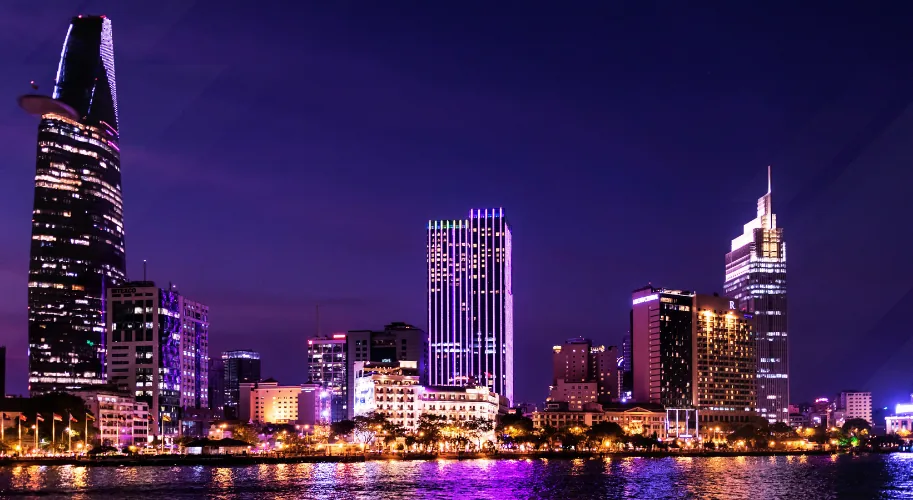
Why Visit:
Vietnam’s bustling economic hub is a fast-paced, energetic, and rich in history. You’ll find French colonial buildings, trendy cafes, and incredible street food.
How to Get There:
- Fly into Tan Son Nhat International Airport (SGN).
- Connected by train and bus to major southern towns.
Top Tips:
- Visit the War Remnants Museum and Cu Chi Tunnels.
- Explore Ben Thanh Market for a variety of food and souvenirs.
- Use Grab (a ride-hailing app) for affordable and convenient transportation.
9. Mekong Delta – Southern Vietnam
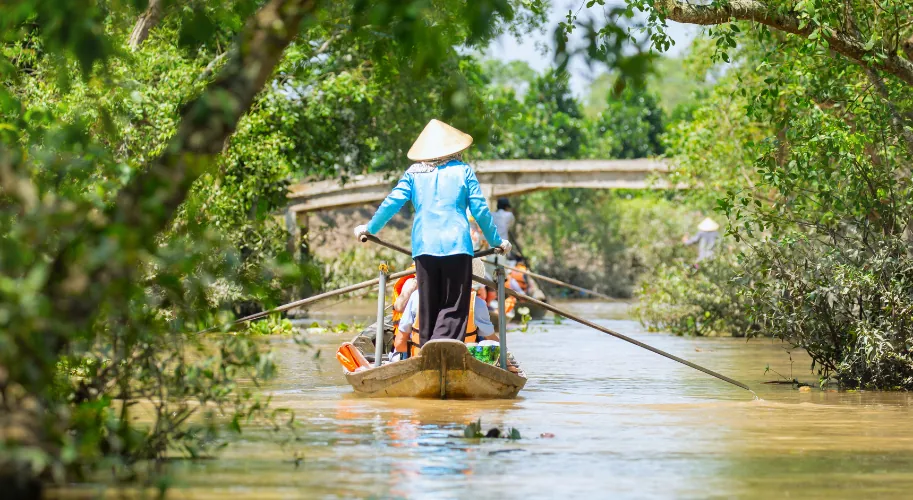
Why Visit:
A maze of rivers, rice fields, and floating markets, the Mekong Delta shows a slower, rural side of Vietnam. It’s also where most of the country’s fruit is grown.
How to Get There:
- Bus or van from Ho Chi Minh City (2–4 hours, depending on the area).
- Popular base towns: Can Tho, Ben Tre, My Tho.
Top Tips:
- Wake up early for the Cai Rang Floating Market.
- Take a boat tour through palm-shaded canals.
- Stay at a local homestay for an authentic experience.
10. Phú Quốc Island – Southern Vietnam
Why Visit:
Known for white sand beaches, snorkeling, and laid-back island life, Phú Quốc is Vietnam’s island paradise. Perfect for unwinding at the end of your trip.
How to Get There:
- Fly into Phú Quốc International Airport from HCMC or Hanoi.
- Ferries also run from Rach Gia and Ha Tien on the mainland.
Top Tips:
- Visit Bai Sao Beach for calm, turquoise water.
- Take the Hon Thom Cable Car—the longest sea cable car in the world.
- Try local seafood at the Dinh Cau Night Market.
Ads

Final Thoughts: Planning Your Vietnam Adventure
There’s a reason Vietnam is considered one of Southeast Asia’s most dynamic travel destinations. Whether you’re trekking through misty mountains, sailing past limestone cliffs, or exploring lantern-lit towns, these are truly the best places to visit in Vietnam.
Plan your trip according to your time and interests. If you have the luxury of a month, consider exploring from north to south. If you’re limited, choose one region and dive deep. Either way, Vietnam will leave you with memories that last a lifetime.
Let the journey begin.
Popular & Historical Place in Thailand
Taling Chan Floating Market || Chatuchak Weekend Market || Amphawa Floating Market || Pratunam Night Market || Explore Pratunam Market || Discover Indy Market Dao Khanong || Phuket Happiness Trips Turtle Village || Thailand Itinerary 7 days || Que faire à Chiang Mai || Tsunami Museum Khao Lak || Pattaya Sheep Farm || Yun Lai Viewpoint || Khun Chang Khian || Pratunam Morning Market || Naka Weekend Market || Space Inspirium || Khlong Bang Luang Floating Market || Siam Niramit Phuket || Hanuman World Phuket || Tha Phae Gate || Lanta Old Town
FAQs
Q: What is the best time to visit Vietnam?
A: The best time to visit Vietnam is from October to April, when the weather is cooler and drier across most regions.
Q: How many days should I spend in Vietnam?
A: Ideally, plan for 3 to 4 weeks to explore all regions. For shorter trips, spend 7–10 days in one area (North, Central, or South).
Q: Is it easy to travel between cities in Vietnam?
A: Yes. You can use domestic flights, trains, or buses to travel. Vietnam has a well-connected travel network, especially between major tourist spots.
Q: Do I need a visa to travel to Vietnam?
A: Many nationalities require a visa. Vietnam offers e-visas for over 80 countries. Check current visa policies before traveling.
Q: Are these places suitable for solo travelers?
A: Absolutely. Vietnam is a safe and budget-friendly destination for solo travelers, offering a plethora of hostels, tours, and friendly locals.

